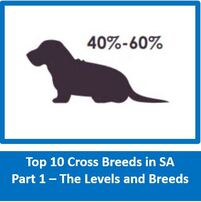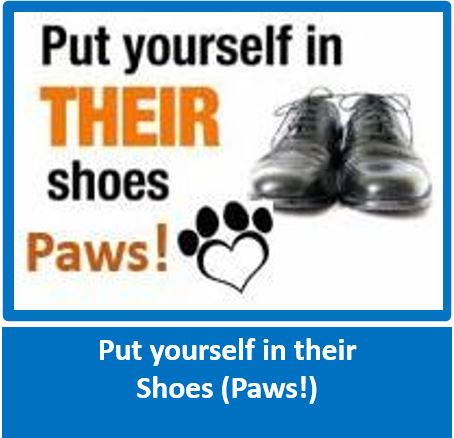
Emergency Down
from www.oceansideanimal.vetport.com - a really great website with both medical and behaviour articles - do pay it a visit when you have some free time.

Having a tool such as this where you can down your dog in any circumstances can really save your dogs life and it is a wonderful training tool to have. Apart from that it can be used in various games, such as the one when you call the dog to you at speed, and then down it in the middle of a large bull' s eye painted onto a piece of plastic!
This is a method to teach your dog to lie down at a distance and to lie down when he/she is running.
Before you start, your dog should reliably lie down on multiple surfaces and in multiple locations when you are standing next to him/her. Fast downs require that the dog knows how to down from a stand and not just from a sit. If your dog will only down from a sit, teach a down from a stand before proceeding.
When training fast downs and downs from a distance, it is very important to use the clicker. The clicker signals the instant the behavior is correct. By the time you manage to deliver the reward, many seconds may have passed. Without the clicker, the dog will be unsure which behavior is being rewarded. As you train for speed, gradually raise the criteria by not rewarding slow downs. When the dog is dropping at a distance, you should go out to reward the dog or toss the food to the dog.
For dogs that are toy oriented, toss a ball over the dogs’ head and send him/her to get it. This helps keep it clear that the dog is to drop at the current location and not come in towards the handler and then drop. When I teach this exercise, I do not always call the animal’s name. When using it to stop a dog running towards danger, use your pet’s name. With practice most dogs will more reliably drop than recall in an emergency situation.
1. The dog drops from a stand with the handler standing in front of the dog.
2. The dog drops from a stand with the handler standing beside the dog.
3. The dog drops with the handler sitting in a chair.
4. The dog drops from a stand with the handler standing one step from the dog.
5. The dog drops with the handler standing 2 steps away.
6. The dog drops from heel at a walking pace. (At first the handler may need to rotate in front of the dog. Continue to practice this exercise until the dog will drop with no body language from the owner and stay down as you continue to walk off.
7. The dog will drop from a run at the owner’s side. (You can initially generate enthusiasm for this exercise by dropping with the dog.)
8. The dog drops 6 feet from the owner.
9. The dog drops when walking around the room.
10. The dog drops when ambling around the yard at a distance up to ten feet.
11. The dog drops in the house with the handler out of sight.
12. The dog drops in the back of the car if he/she rides loose.
13. The dog drops when approaching a known person in a calm manner.
14. The dog drops at the owner’s side when a dog runs by.
15. The dog drops at a distance of 20 feet from the owner.
16. The dog drops of distance up to 20 feet when not in training mode. (Randomly ask the dog to drop when playing with the dog, walking the dog, or hanging around home.)
17. The dog drops quickly at distances up to 20 feet.
18. The dog drops at distances up to 30 feet.
19. The dog will drop when running and playing at distances up to 30 feet.
20. The dog will drop at distances of up to 20 feet with simulated danger. Try to practice dropping the dog while people get out of their cars, cars drive down the driveway, dogs run by, bicyclists ride by, and any other situation that resembles a situation that might cause your dog to give chase.
21. The dog drops with simulated dangers at a distance of up to 30 feet.
22. The dog drops when chasing a toy.
23. The dog drops when being recalled towards you. (At first walk towards the dog as you give the signal to drop. This helps make it clear to the dog that the drop is supposed to be at his/her current location and not at your feet.)
24. Continue to practice in a variety of situations at greater distance.
This is a method to teach your dog to lie down at a distance and to lie down when he/she is running.
Before you start, your dog should reliably lie down on multiple surfaces and in multiple locations when you are standing next to him/her. Fast downs require that the dog knows how to down from a stand and not just from a sit. If your dog will only down from a sit, teach a down from a stand before proceeding.
When training fast downs and downs from a distance, it is very important to use the clicker. The clicker signals the instant the behavior is correct. By the time you manage to deliver the reward, many seconds may have passed. Without the clicker, the dog will be unsure which behavior is being rewarded. As you train for speed, gradually raise the criteria by not rewarding slow downs. When the dog is dropping at a distance, you should go out to reward the dog or toss the food to the dog.
For dogs that are toy oriented, toss a ball over the dogs’ head and send him/her to get it. This helps keep it clear that the dog is to drop at the current location and not come in towards the handler and then drop. When I teach this exercise, I do not always call the animal’s name. When using it to stop a dog running towards danger, use your pet’s name. With practice most dogs will more reliably drop than recall in an emergency situation.
1. The dog drops from a stand with the handler standing in front of the dog.
2. The dog drops from a stand with the handler standing beside the dog.
3. The dog drops with the handler sitting in a chair.
4. The dog drops from a stand with the handler standing one step from the dog.
5. The dog drops with the handler standing 2 steps away.
6. The dog drops from heel at a walking pace. (At first the handler may need to rotate in front of the dog. Continue to practice this exercise until the dog will drop with no body language from the owner and stay down as you continue to walk off.
7. The dog will drop from a run at the owner’s side. (You can initially generate enthusiasm for this exercise by dropping with the dog.)
8. The dog drops 6 feet from the owner.
9. The dog drops when walking around the room.
10. The dog drops when ambling around the yard at a distance up to ten feet.
11. The dog drops in the house with the handler out of sight.
12. The dog drops in the back of the car if he/she rides loose.
13. The dog drops when approaching a known person in a calm manner.
14. The dog drops at the owner’s side when a dog runs by.
15. The dog drops at a distance of 20 feet from the owner.
16. The dog drops of distance up to 20 feet when not in training mode. (Randomly ask the dog to drop when playing with the dog, walking the dog, or hanging around home.)
17. The dog drops quickly at distances up to 20 feet.
18. The dog drops at distances up to 30 feet.
19. The dog will drop when running and playing at distances up to 30 feet.
20. The dog will drop at distances of up to 20 feet with simulated danger. Try to practice dropping the dog while people get out of their cars, cars drive down the driveway, dogs run by, bicyclists ride by, and any other situation that resembles a situation that might cause your dog to give chase.
21. The dog drops with simulated dangers at a distance of up to 30 feet.
22. The dog drops when chasing a toy.
23. The dog drops when being recalled towards you. (At first walk towards the dog as you give the signal to drop. This helps make it clear to the dog that the drop is supposed to be at his/her current location and not at your feet.)
24. Continue to practice in a variety of situations at greater distance.




